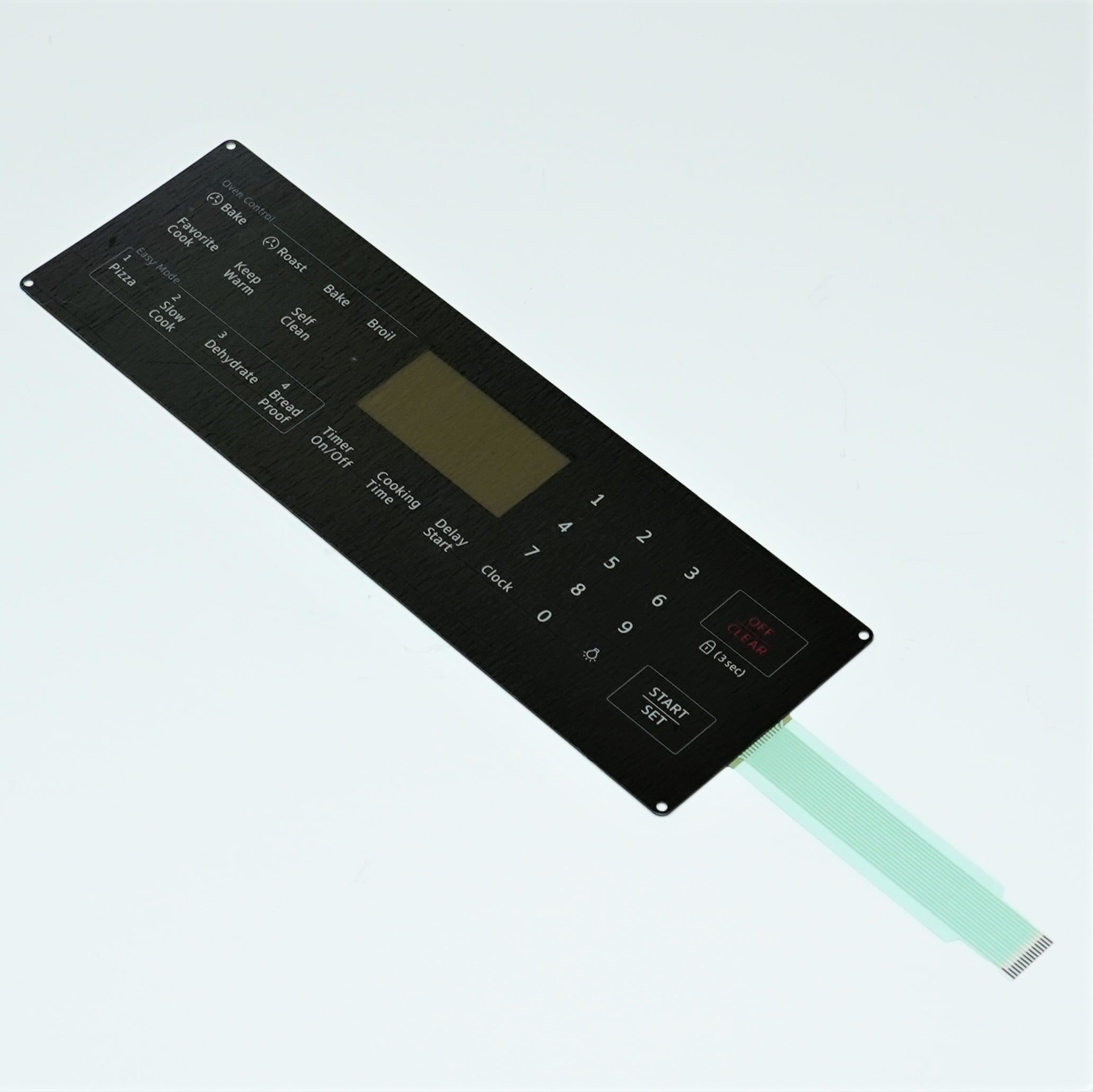Recognizing Membrane Layer Switches: The Key to Durable and Trusted Controls

What Are Membrane Switches?
Membrane buttons are an advanced solution in the world of user interface technology, incorporating capability and design flawlessly. These tools work as a user interface in between individuals and digital systems, incorporating several elements into a small style. Normally created from flexible, slim layers of materials, membrane layer buttons are developed to react to touch, enabling customers to interact with machinery and electronic devices successfully.
The primary elements of a membrane button include a published circuit layer, graphic overlay, and a spacer layer that prevents unintended activation. The visuals overlay can be tailored to mirror brand identification or individual choices, improving aesthetics while making sure functionality. Membrane layer switches are generally used in various applications, including medical tools, customer electronic devices, and commercial devices, owing to their durability and resistance to environmental variables such as moisture and dust.
One of the essential advantages of membrane switches is their capability to hold up against wear and tear, making them suitable for high-traffic atmospheres. Furthermore, they are lightweight and need very little space, permitting for ingenious designs in item growth. On the whole, membrane layer switches stand for a sensible and effective choice for modern-day digital interfaces, marrying technology with user-centric style principles.
Exactly How Membrane Changes Job
The operation of membrane layer switches over hinges on a basic yet efficient system that translates individual input right into electronic signals. When an individual presses the button, the leading layer deforms, enabling a conductive element in the circuit layer to make call with a matching conductive pad on the underside of the visuals overlay.
The design of membrane layer switches can vary, but they usually include domes or tactile elements to offer comments to the customer, boosting the overall experience - membrane switch. The materials used in membrane layer buttons, such as polyester or polycarbonate, add to their durability and resistance to environmental variables, consisting of dampness and dirt. Additionally, the published circuits are typically enveloped, which safeguards them from deterioration in time.
Benefits of Membrane Switches

Furthermore, membrane switches are known for their resilience. browse around this site Constructed from robust materials, they are resistant to dirt, dampness, and physical wear, which significantly extends their life expectancy contrasted to conventional mechanical switches. This resilience makes them particularly ideal for high-traffic environments and applications requiring longevity.
An additional substantial advantage is the ease of cleansing and upkeep. The smooth surface of membrane layer switches reduces dirt build-up and is commonly impervious to spills, making them excellent for setups that call for constant sanitization.
Moreover, membrane layer buttons provide a streamlined profile, bring about a thinner layout that can be incorporated into different devices without including mass. This attribute not just improves the visual appeal but also adds to a more ergonomic item design.
Applications of Membrane Layer Buttons
User-friendly and versatile, membrane switches locate applications throughout a vast array of markets, including clinical devices, customer electronic devices, and commercial tools. In the medical area, these switches are integral to devices such as diagnostic equipment, individual tracking systems, and mixture pumps, where integrity and convenience of cleaning are crucial. Their capacity to endure harsh settings and maintain capability makes them suitable for such applications.

In consumer electronic devices, membrane layer buttons are used in products like microwaves, cleaning makers, and remotes - membrane switch. Their smooth style enables user-friendly interface, improving the overall individual experience while providing sturdiness and resistance to deterioration
Industrial equipment likewise gains from membrane layer buttons, specifically in control panels for equipment and automation systems. These buttons provide defense versus dust and wetness, guaranteeing regular efficiency in challenging atmospheres. Their adjustable features permit makers to customize them to details functional requirements, improving performance and performance.
Selecting the Right Membrane Layer Switch Over
When choosing a membrane switch, it is important to take into consideration various factors that influence efficiency and suitability for specific applications. The main considerations consist of environmental problems, responsive responses, toughness, and design specs.
First, evaluate the operating environment; buttons revealed to wetness, chemicals, or extreme temperatures require particular materials to ensure long life and capability. Next, evaluate the need for responsive responses. Depending on customer interaction, some applications might gain from a responsive response to validate activation, while others may like a non-tactile layout for aesthetic factors.
Resilience is an additional crucial element; membrane buttons need to be made to hold up against regular use, impacts, and abrasion. Make certain the selected button click to read more can endure the anticipated lifecycle, specifically in high-usage scenarios.

Conclusion
To conclude, membrane switches over serve as necessary elements in the layout of durable and reliable control systems throughout different industries. Their compact design, incorporated with durable construction and personalized functions, boosts user communication while guaranteeing durability in requiring environments. The adaptability of membrane switches over enables for customized options that fulfill details operational requirements, reinforcing their significance in contemporary innovation. As industries proceed to develop, the value of incorporating reliable membrane layer switch remedies can not be overemphasized.
Membrane layer switches over represent a vital facet of modern-day interface design, blending performance with durability in different applications.Membrane layer buttons are an innovative remedy in the world of individual interface innovation, integrating performance and style effortlessly. Commonly created from flexible, thin layers of materials, membrane buttons are designed to react to touch, making it possible for customers to connect with equipment and digital gadgets successfully.
The style of membrane switches can differ, yet they commonly integrate domes or responsive aspects to offer feedback to the user, boosting the general experience.In final thought, membrane switches over offer as essential components in the layout of sturdy and trusted control systems across different markets.